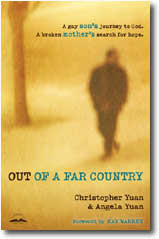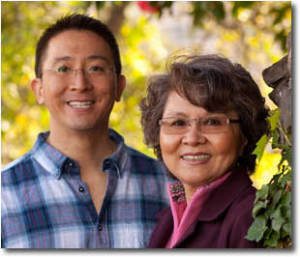Kerby Anderson looks at the latest data on the American family and highlights trends that are changing the nature of family in America as well as debunking some sensationalist headlines. From a biblical worldivew perspective, Christians should be concerned about these trends which reflect an ongoing breakdown of family in America.
Introduction
Are we headed toward a post-marital society where marriage is rare and the traditional family is all but extinct? One would certainly think so by reading some of the stories that have appeared lately. A New York Times headline in 2003 warned of “marriage’s stormy future” and documented the rise in the number of nontraditional unions as well as the rising percentage of people living alone.{1} A 2006 New York Times article documented the declining percentage of married couples as a proportion of American households and thus declared that married households are now a minority.{2} And a 2007 headline proclaimed that “51% of women are now living without a spouse.”{3}
Well, let’s take a deep breath for a moment. To borrow a phrase from Mark Twain, rumors about the death of marriage and family are greatly exaggerated. But that doesn’t mean that marriage as an institution is doing well and will continue to do well in the twenty-first century.
Let’s first take on a few of these headlines pronouncing the end of marriage. The October 2006 New York Times headline proclaimed that “To Be Married Means to Be Outnumbered.” In other words, married households are now a minority in America and unmarried households are the majority. But the author had to manipulate the numbers in order to come to that conclusion. This so-called “new majority” of unmarried households includes lots of widows who were married. And this claim only works if you count households and not individuals. For example, if you have two households—one with two married people and three children and another with a single widow living alone—they would be split between one married household and one unmarried household. But one household has five people, and the other household has one person.
What about the January 2007 New York Times headline proclaiming that “51% of Women Are Now Living Without a Spouse”? Columnist and radio talk show host Michael Medved called this journalistic malpractice({4} and the ombudsman for the New York Times took his own paper to task for the article.{5} The most recent available figures showed that a clear majority (56%) of all women over the age of twenty are currently married.
So how did the author come to the opposite conclusion? It turns out that the author chose to count more than ten million girls between the ages of fifteen and nineteen as “women.” So these so-called “women” are counted as women living without a spouse (never mind that they are really teenage girls living at home with their parents). This caused the ombudsman for the New York Times to ask this question in his op-ed: “Can a 15-year-old be a ‘Woman Without a Spouse’?”{6}
It is also worth mentioning, that even with this statistical sleight of hand, you still cannot get to the conclusion that a majority of women are living without a spouse. The article’s author had to find a way to shave off an additional 2% of the married majority. He did this by including those women whose “husbands are working out of town, are in the military, or are institutionalized.”{7}
Conflicting Attitudes about Marriage and Family
It is certainly premature to say that married couples are a minority and women living without a husband are a majority. But there has been a definite trend that we should not miss and will now address. The definition of marriage and the structure of family in the twenty-first century is very different from what existed in the recent past.
A few decades ago, marriages were the foundation of what many commentators referred to as “the traditional family.” Now marriages and families are taking some very unfamiliar shapes and orientations due to different views of marriage and family.
Americans are not exactly sure what to think about these dramatic changes in marriage and family. On the one hand, they believe that marriage and family are very important. A Better Homes and Garden survey found that their readers rated their relationship to their spouse as the single most important factor in their personal happiness.{8} And a MassMutual study on family values (taken many years ago) reported that eight out of ten Americans reported that their families were the greatest source of pleasure in their lives—more than friends, religion, recreation, or work.{9}
On the other hand, Americans are much less sanguine about other people’s marriages and families. I call this the “Lake Wobegon effect” where “all the women are strong, all the men are good looking, and all the children are about average.” In other words, their marriage and family are fine, but the rest of the marriages and families are not. While the MassMutual Family Values Study found that a majority (81%) pointed to their family as the greatest source of pleasure, it also found that a majority (56%) rated the family in the U.S. “only fair” or “poor.” And almost six in ten expected it to get worse in the next ten years. The survey concluded that “Americans seem to see the family in decline everywhere but in their own home.”{10}
Similar results can be found in many other nationwide polls. A Gallup poll found that Americans believe the family is worse off today than it was ten years ago. And they believed it would be worse off in the future as well.{11} Americans also demonstrated their ambivalence toward marriage and family not only in their attitudes but their actions. One trend watcher predicted more than a decade ago in an article in American Demographics that marriage would become in the 1990s and the twenty-first century “an optional lifestyle.”{12}
Changing Trends in Marriage
While it may be too early to put the institution of marriage on the endangered species list, there is good reason to believe that changing attitudes and actions have significantly transformed marriage in the twenty-first century. The current generations are marrying later, marrying less, and divorcing more than previous generations.
A major transition in attitudes toward marriage began with the baby boom generation. From 1946 to 1964, over seventy-six million babies were born. By the 1960s the leading edge of the baby boom generation was coming of age and entering into the years when previous generations would begin to marry. But baby boomers (as well as later generations) did not marry as early as previous generations. Instead, they postponed marriage until they established their careers. From the 1960s to the end of the twenty-first century, the median age of first marriage increased by nearly four years for men and four years for women.
Some of those who postponed marriage ended up postponing marriage indefinitely. An increasing proportion of the population adopted this “marriage is optional” perspective and never married. They may have had a number of live-in relationships, but they never joined the ranks of those who married. For them, singleness was not a transition but a lifestyle.
Over the last few decades, the U.S. Census Bureau has documented the increasing percentage of people who fit into the category of “adults living alone.” These are often lumped into a larger category of “non-family households.” Within this larger category are singles that are living alone as well as a growing number of unmarried, cohabiting couples who are “living together.” The U.S. Census Bureau estimated that in 2000 there were nearly ten million Americans living with an unmarried opposite-sex partner and another 1.2 million Americans living with a same-sex partner.
These numbers are unprecedented. It is estimated that during most of the 1960s and 1970s, only about a half a million Americans were living together. And by 1980, that number was just 1.5 million.{13} Now that number is more than twelve million.
Cohabiting couples are also changing the nature of marriage. Researchers estimate that half of Americans will cohabit at one time or another prior to marriage.{14}And this arrangement often includes children. The traditional stereotype of two young, childless people living together is not completely accurate; currently, some 40% of cohabiting relationships involve children.{15}
Couples often use cohabitation to delay or forego marriage. But not only are they postponing future marriage, they are increasing their chance of marriage failure. Sociologists David Popenoe and Barbara Dafoe Whitehead, in their study for the National Marriage Project, wrote: “Cohabitation is replacing marriage as the first living together experience for young men and women.” They conclude that those who live together before they get married are putting their future marriage in danger.{16}
Finally, we should note the impact of cohabitation on divorce. When the divorce rate began to level off and even slightly decline in the 1980s, those concerned about the state of marriage in America began to cheer. But soon the cheers turned to groans when it became obvious that the leveling of the divorce rate was due primarily to an increase in cohabitation. Essentially the divorce rate was down because the marriage rate was down. Couples who break up before they marry don’t show up as divorce statistics.
Many marriages today are less permanent than in previous decades. There have always been divorces in this country, but what used to be rare has now become routine. Changing attitudes toward marriage and divorce in this country are reflected in the changing divorce rate.
A graph of the divorce rate shows two significant trends. One is a sharp increase in divorces in the late 1960s that continued through the 1970s. The second is a leveling and even a slight decline in the 1980s. Both are related to the attitudes of the baby boom generation toward marriage and divorce.
The increasing divorce rate in the 1970s was due to both attitude and opportunity. Baby boomers did not stay married as long as their parents due to their different attitudes towards marriage and especially their attitude toward commitment in marriage. It is clear from the social research that the increase in the divorce rate in the 1970s did not come from empty nesters (e.g., builders) finally filing for divorce after sending their children into the world. Instead it came from young couples (e.g., baby boomers) divorcing even before they had children. {17}
The opportunity for divorce was also significant. When increasing numbers of couples began seeking divorce, state legislatures responded by passing no-fault divorce laws. Essentially a married person could get a divorce for any reason or no reason at all.
Economic opportunity was also a significant factor in divorce. During this same period, women enjoyed greater economic opportunities in the job market. Women with paychecks are less likely to stay in a marriage that was not fulfilling to them and have less incentive to stay in a marriage. Sociologist David Popenoe surveying a number of studies on divorce concluded that “nearly all have reached the same general conclusion. It has typically been found that the probability of divorce goes up the higher the wife’s income and the closer that income is to her husband’s.”{18}
The second part of a graph on divorce shows a leveling and even a slight decline. The divorce rate peaked in 1981 and has been in decline ever since. The reasons are twofold. Initially, the decline had to do with the aging of the baby boom generation who were entering into those years that have traditionally had lower rates of divorce. But long term the reason is due to what we have already discussed in terms of the impact of cohabitation on divorce. Fewer couples are untying the knot because fewer couples are tying the knot.
Changing Trends in Family
We have already mentioned that starting with the baby boom generation and continuing on with subsequent generations, couples postponed marriage. But not only did these generations postpone marriage, they also postponed procreation. Unlike the generations that preceded them (e.g., the builder generation born before the end of World War II), these subsequent generations waited longer to have children and also had few children. Lifestyle choice was certainly one factor. Another important factor was cost. The estimated cost of raising a child during this period of time rose to over six figures. Parents of a baby born in 1979 could expect to pay $66,000 to rear a child to eighteen. For a baby born in 1988, parents could expect to pay $150,000, and that did not include additional costs of piano lessons, summer camp, or a college education.{19}
When these generations did have children, often the family structure was very different than in previous generations. Consider the impact of divorce. Children in homes where a divorce has occurred are cut off from one of the parents and they suffer emotionally, educationally, and economically.
Judith Wallerstein in her research discovered long-term psychological devastation to the children.{20} For example, three out of five children felt rejected by at least one parent. And five years after their parents’ divorce, more than one-third of the children were doing markedly worse than they had been before the divorce. Essentially she found that these emotional tremors register on the psychological Richter scale many years after the divorce.
The middle class in this country has been rocked by the one-two punch of divorce and illegitimacy, creating what has been called the “feminization of poverty.” U.S. Census Bureau statistics show that single moms are five times more likely to be poor than are their married sisters.{21}
An increasing percentage of women give birth to children out of wedlock. This increase is due in large part to changing attitudes toward marriage and family. In a society that is already changing traditional patterns (by postponing marriage, divorcing more frequently, etc.), it is not surprising that many women are avoiding marriage altogether. Essentially, the current generation disconnects having children and getting married. In their minds, they separate parenthood from marriage, thus creating an enormous increase in the number of single parent homes.
Greater social acceptance of out-of-wedlock births, divorce, and single parenting tends to reinforce the trends and suggests that these percentages will increase in the future. Young adults who contemplate marriage may be less inclined to do so because they were raised in a home where divorce occurred. A young woman raised by a single mom may be less inclined to marry when they are older, convinced that they can raise a child without the help of a husband. Better employment options for young women even encourage them to “go it alone.”
These changes in attitudes and changes in the structure of marriage and family have created a very different family in the twenty-first century. One writer imagined the confusion that children would feel in this futuristic scenario:
On a spring afternoon, half a century from today, the Joneses are gathered to sing “Happy Birthday” to Junior. There’s Dad and his third wife, Mom and her second husband, Junior’s two half brothers from his father’s first marriage, his six stepsisters from his mother’s spouse’s previous unions, 100-year-old Great Grandpa, all eight of Junior’s current “grandparents,” assorted aunts, uncles-in-law and stepcousins. While one robot scoops up the gift wrappings and another blows out the candles, Junior makes a wish . . . that he didn’t have so many relatives.{22}
Notes
1. Tamar Lewin, “Ideas & Trends: Untying the Knot: For Better or Worse: Marriage’s Stormy Future,” New York Times, 23 November 2003, 1.
2. Sam Roberts, “It’s Official: To be Married means to be Outnumbered,” New York Times, 15 October 2006, 22.
3. Sam Roberts, “51% of Women are now Living Without Spouse,” New York Times, 16 January 2007, 1.
4. Michael Medved, “Journalistic Malpractice in ‘Marriage is Dead’ Report, 17 January 2007, www.townhall.com.
5. Peter Smith, “New York Times Ombudsman Takes Place to Task for its Journalistic Midadventures on Marriage,” 13 February 2007, www.LifeSiteNews.com.
6. Byron Calame, “Can a 15-Year-Old Be a ‘Woman Without a Spouse’?” New York Times, 11 February 2007.
7. Roberts, “51% of Women are now Living Without Spouse.”
8. What’s Happening to American Families, October 1988. 22.
9. MassMutual American Values Study, July 1989.
10. Ibid., 29-30.
11. “The 21st Century Family,” Newsweek Special Edition, Winter/Spring 1990, 18.
12. Martha Farnsworth Riche, “The Postmarital Society,” American Demographics, November 1988, 23.
13. U. S. Bureau of the Census, Current Population Reports, Series P20-537; America’s Families and Living Arrangements: March 2000 and earlier reports.
14. Larry L. Bumpass, James A. Sweet, and Andrew Cherlin, “The Role of Cohabitation in the Declining Rates of Marriage,” Journal of Marriage and Family 53 (1991), 914.
15. Ibid., 926.
16. David Popenoe and Barbara Dafoe Whitehead, “Should We Live Together? What Young Adults Need to Know about Cohabitation before Marriage,” The National Marriage Project, the Next Generation Series, Rutgers, the State University of New Jersey, January 1999.
17. Landon Jones, Great Expectations: America and the Baby Boom Generation (New York: Ballantine, 1980), 215.
18. David Popenoe, Disturbing the Nest: Family Change and Decline in Modern Societies (New York: de Gruyter, 1988), 223.
19. Karen Peters, “$150,000 to raise a kid,” USA Today, 17 January 1990, 1A.
20. Judith Wallerstein and Sandra Blakeslee, Second Chances: Men, Women and Children A Decade after Divorce (New York: Ticknor and Fields, 1989).
21. Bureau of the Census, Statistical Abstract of the United States, 1992 (Washington, DC: U.S. Government Printing Office, 1993), Table 719.
22. “When the Family Will Have a New Definition,” What the Next 50 Years Will Bring, a special edition of U.S. News and World Report, 9 May 1983, A3.
© 2007 Probe Ministries



